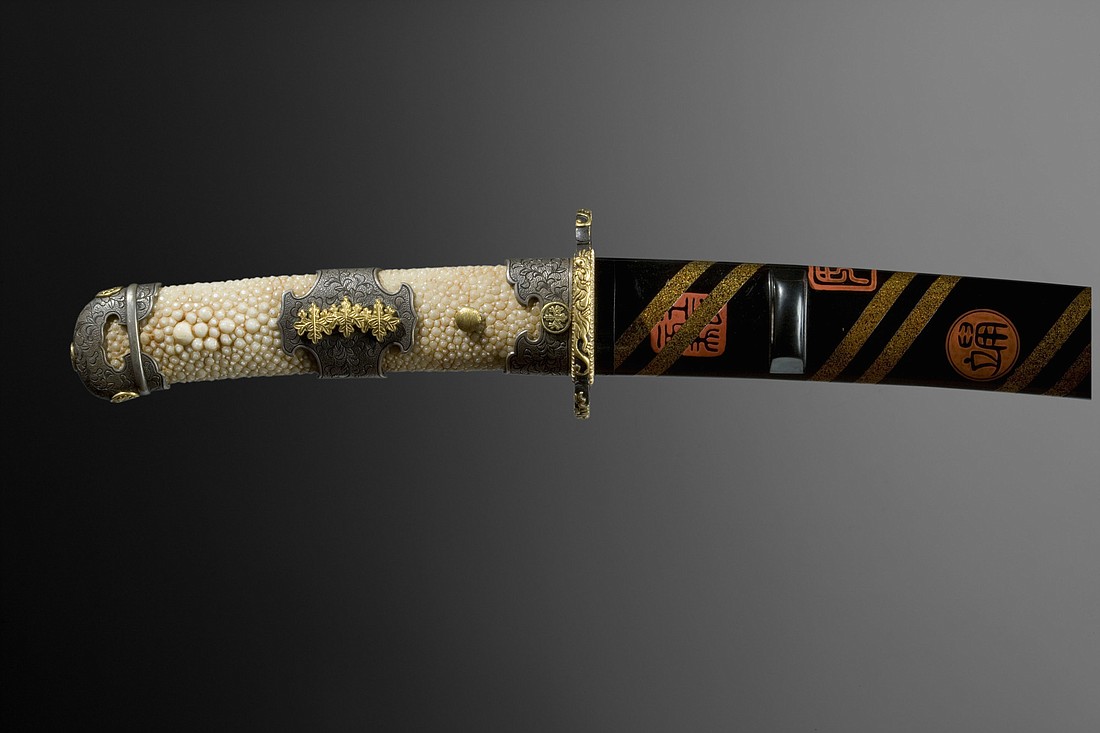- November 24, 2024
-
-
Loading

Loading

Benita Stambler was examining samples of a colorful, intricate woven pattern. Stambler, the John and Mable Ringling Museum of Art’s Asian art coordinator, had been studying these colorful cloth artifacts in great detail, in preparation for an upcoming exhibit. She even visited local weavers to get hands-on insight as to how people could assemble such artistic stitching by hand. But for Stambler, the most interesting thing was their paradoxical nature. These ornate, intricately constructed weavings weren’t designed for show. Quite the opposite. They were designed for combat — for samurai warriors.
And just like the armor they wear, samurai warriors themselves are something of a walking paradox: the trained killer who lived for the beauty of life.
From Jan. 15 through April 17, the wandering warrior class of Japan will find a temporary home in Sarasota, with “Samurai: The Way of the Warrior.”
The Ringling’s new exhibit will bring 88 pieces of genuine samurai swords, suits of armor, ceremonial helmets and artifacts from Japan’s Edo period (1603 to 1868), the last great age of the samurai before the Westernization of Japan.
The samurai show is arriving just in time to add to The Ringling’s already Asian-focused museum season to herald the opening of its Center for Asian Art in the Dr. Helga Wall-Apelt Gallery of Asian Art in February. And, just like with The Ringling’s previous Asian exhibits, curators hope audiences rise above preconceived notions and stereotypes. For Stambler and Christopher Jones, assistant curator of exhibitions, they hope people realize that samurai were more than just vicious swordsmen. They were devoted to ceremonial beauty.
“I came into this exhibition just knowing samurai through pop culture,” says Jones. “My entry into the world of the samurai growing up as a kid was through the ‘Lone Wolf and Cub’ comics and Akira Kurosawa films, so engaging in this material and learning more about the actual history of the samurai was fascinating.”
That history, as represented by the collection, which is on loan from the Contemporanea Progetti and Stibbert Museum in Florence, Italy, is one of intense ceremony, artisanship and detail. The more than two dozen swords and 10 suits of armor represent a group of people who were dedicated to creating a new set of traditions and for making fashion statements.
“The myths and legends that we associate with samurai today were created during this time period,” says Jones. “A lot of the ideas about what samurai culture meant were created during the peaceful Edo period.”
With the advent of peace, samurai’s armor evolved to reflect different priorities. Functional protection wasn’t a samurai’s main interest anymore; making a statement was.
The Ringling’s collection include detailed swords, colorful suits of armor with eloquent weaving, and perhaps the most noticeable detail: the helmet. Used as a form of protection and intimidation to opposing factions, the helmets in the show reflect the colorful characters in the samurai. Helmets are shaped in various forms — some like fish, others like intimidating monsters. Some even have long, playful rabbit ears.
The complete suit of armor, complete with helmet, sword and all, is a meticulous work of art.
“There’s one samurai scholar I like to quote, who said, ‘The culture and weaponry of the samurai are two wings of the same bird. It can’t fly unless you have both,’” says Stambler. “We like to think of the samurai as concerned with strict warfare, but they were also concerned with the beauty of life. They were more than just sword fights.”